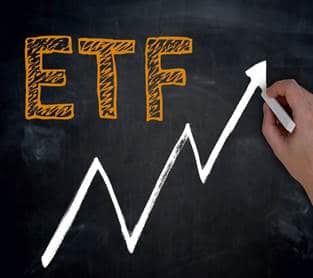The Pitfalls of Active Managed ETF Investing
In recent years, the investment landscape has witnessed a surge in popularity for exchange-traded funds (ETFs). These investment vehicles offer investors exposure to a diversified portfolio of assets, often at a lower cost compared to traditional mutual funds. While passive ETFs have gained significant traction, active managed ETFs have also emerged as an alternative for investors seeking potentially higher returns through active management strategies. However, despite their allure, active managed ETFs come with their own set of challenges and limitations. In this blog post, we will critically analyze the pitfalls associated with active managed ETF investing.
I. Understanding Active Managed ETFs:
Active managed ETFs are investment funds that combine the features of traditional actively managed mutual funds with the structure and benefits of ETFs. Unlike passive ETFs that aim to replicate the performance of a specific index, active managed ETFs are actively managed by professional portfolio managers who make investment decisions based on their analysis and market outlook.
II. Higher Costs and Fees:
One of the primary drawbacks of active managed ETFs is their higher costs and fees compared to passive ETFs. Active management involves extensive research, analysis, and trading activity, which leads to increased expenses. These costs are typically passed on to investors in the form of higher expense ratios and transaction fees. Over time, these additional costs can significantly erode potential returns.
III. Underperformance and Lack of Consistency:
Numerous studies have shown that actively managed funds, including active managed ETFs, tend to underperform their benchmark indices over the long term. The pursuit of outperformance often leads to higher turnover rates and increased trading costs, which can negatively impact returns. Additionally, active managers face the challenge of consistently making accurate investment decisions in an ever-changing market environment.
IV. Limited Track Record:
Active managed ETFs are a relatively new investment product compared to traditional mutual funds or passive ETFs. As a result, many active managed ETFs have limited track records, making it difficult for investors to assess their long-term performance and evaluate the effectiveness of the underlying investment strategies. This lack of historical data can introduce additional uncertainty and risk for investors.
V. Lack of Transparency:
Another concern with active managed ETFs is the potential lack of transparency regarding portfolio holdings and trading activity. Unlike traditional mutual funds, which disclose their holdings on a quarterly basis, active managed ETFs are only required to disclose their holdings on a daily or monthly basis. This limited transparency can make it challenging for investors to fully understand the risks associated with their investments.
VI. Tax Inefficiency:
Active managed ETFs often experience higher turnover rates compared to passive ETFs, resulting in potential capital gains distributions. These distributions can trigger tax liabilities for investors, reducing overall after-tax returns. In contrast, passive ETFs typically have lower turnover rates, leading to fewer taxable events.
VII. Behavioral Biases and Emotional Investing:
Active managed ETFs may also expose investors to behavioral biases and emotional investing. The constant monitoring of portfolio performance and decision-making based on short-term market movements can lead to impulsive investment decisions driven by fear or greed. Such emotional investing can hinder long-term wealth accumulation and increase the likelihood of underperformance.
While active managed ETFs offer the potential for higher returns through active management strategies, they come with several pitfalls that investors should carefully consider. Higher costs, underperformance, limited track records, lack of transparency, tax inefficiency, and behavioral biases are among the key challenges associated with active managed ETF investing. As with any investment decision, it is crucial for investors to thoroughly research and evaluate the risks and benefits before allocating capital to active managed ETFs.
At Pyjamastraders we will warn all about Active Managed ETF and we recommend taking a look at Passive ETF Investing
Passive ETF Investing, it lays a good foundation on you journey to wealth
Ole Borgesen & Simon Frandsen / Pyjamastraders

